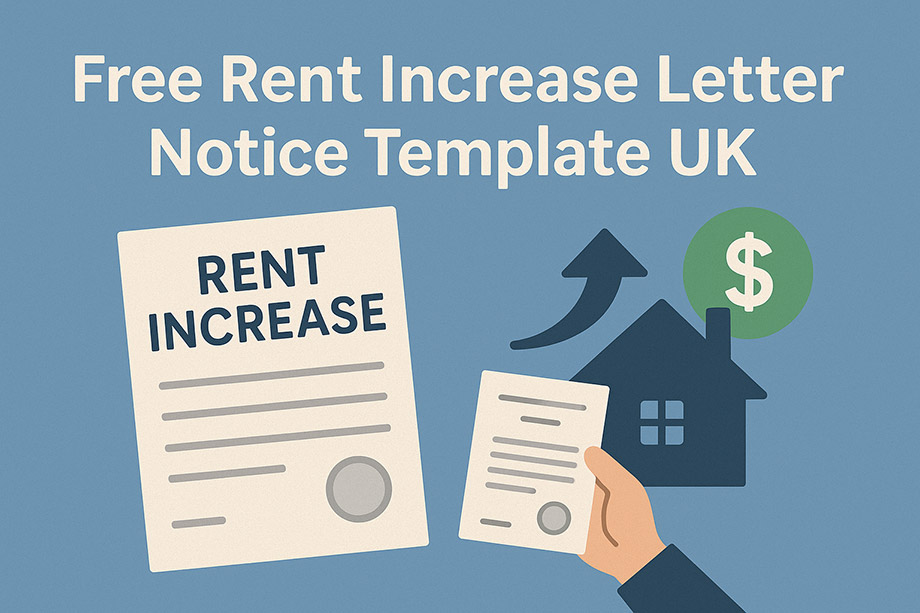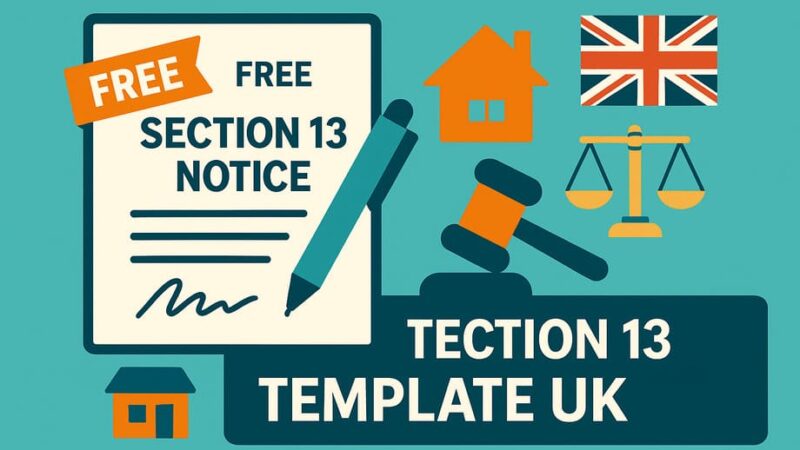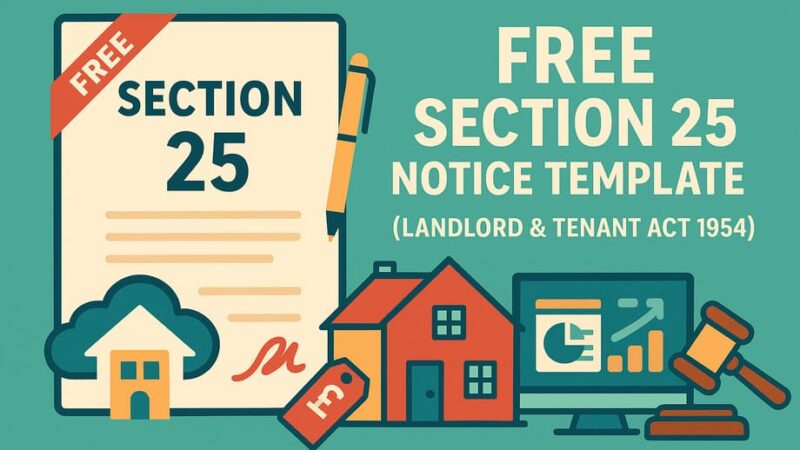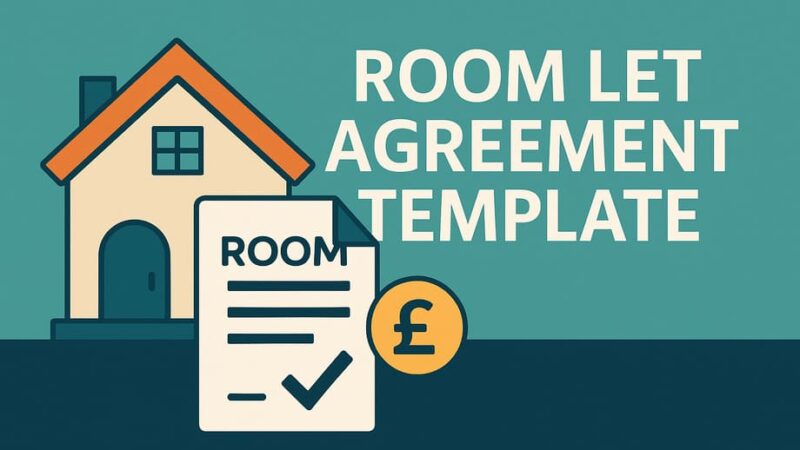Free Rent Increase Letter Notice Template UK (Word & PDF)

If you’re a landlord or letting agent in the UK, knowing how to properly notify tenants about a rent increase is essential. A free rent increase letter notice template UK can simplify this process, ensuring your notice is clear, professional, and legally compliant.
This guide covers:
- What a rent increase letter is
- Legal requirements in the UK
- How to customise your notice
- Free Word & PDF download templates
- FAQs and best practices
What Is a Rent Increase Letter Notice?
A rent increase letter notice template is a pre-formatted document that landlords can use to notify tenants about an upcoming rent rise. It includes:
- The tenant’s details
- Current and new rent amounts
- The effective date of the increase
- References to the tenancy agreement
Using a free template saves time and helps avoid mistakes that could make your notice invalid.
Legal Requirements for Rent Increase Notices in the UK
When sending a rent increase notice, you must follow UK tenancy laws:
- Notice period: At least 1 month for monthly tenancies, 6 months for yearly ones (under Assured Shorthold Tenancy rules).
- Reasonableness: The increase must reflect current market rates.
- Form 4: In England, landlords may be required to use a Section 13 (Form 4) notice for rent increases.
Using a rent increase notice template UK ensures you include all the legally required information and avoid disputes.
How to Customise Your Template
While the template gives you the structure, personalise it with:
- Tenant’s name and address
- Current rent and new rent amount
- Effective date of the increase
- A short explanation (e.g., increased maintenance costs, market changes)
A polite and professional tone helps maintain good tenant relations.
Sample Rent Increase Letter (UK)
Below is a sample rent increase letter you can use as a reference.
[Your Name / Landlord’s Name]
[Your Address]
[City, Postcode]
Date: [Insert Date]
To: [Tenant’s Full Name]
[Tenant’s Address]
[City, Postcode]
Subject: Notice of Rent Increase
Dear [Tenant’s Name],
I am writing to inform you of a change to the rent for the property at [Property Address], which you currently occupy under your tenancy agreement dated [Start Date].
The current rent is £[Current Rent] per month. This will increase to £[New Rent] per month, effective from [Effective Date].
This increase is in line with current market rates and ensures that the property continues to be maintained to the standards you expect.
Please update your payment arrangements to reflect the new rental amount from the effective date.
If you have any questions about this notice, please do not hesitate to contact me at [Phone/Email].
Thank you for your continued tenancy.
Sincerely,
[Landlord’s Signature]
[Landlord’s Printed Name]
Note: For Assured Shorthold Tenancies in England, landlords may be required to use a Section 13 Form 4 notice instead of a standard letter.
Download Your Free Rent Increase Letter Template (Word & PDF)
Save time with our ready-to-use rent increase notice templates:
- [Download Word Template]
- [Download PDF Template]
These templates are fully editable and suitable for UK tenancies.
Tip: Keep a signed copy for your records and confirm the tenant has received it.
Benefits of Using a Rent Increase Letter Template
- Saves time drafting notices from scratch
- Reduces errors and ensures compliance
- Provides a professional and clear format
- Protects landlords legally
- Helps maintain positive tenant relationships
Key Elements to Include in a Rent Increase Letter
- Tenant’s full name and address
- Current rent amount
- Proposed new rent amount
- Effective date of increase
- Reference to tenancy agreement clause
- Contact details for queries
- Signature and date
Common Mistakes to Avoid
- Not giving the correct notice period
- Failing to use the correct form (where required)
- Using unclear or vague wording
- Forgetting to sign and date the letter
Maintaining Good Tenant Relationships
- Communicate clearly and respectfully
- Provide reasons for the increase
- Be open to discussions or flexible arrangements
- Give tenants enough time to plan
How to Write a Rent Increase Letter (Step-by-Step)
Start with the tenant’s full details and property address
State the current rent amount and the proposed new rent
Provide the date the new rent will take effect
Reference the tenancy agreement or Section 13 rules if applicable
Explain the reason for the increase (optional but recommended)
Sign and date the letter
What is a rent increase notice?
A formal letter landlords send to tenants to inform them of a new rental amount starting on a specific date.
How much notice must a landlord give for a rent increase in the UK?
At least 1 month for monthly tenancies, and 6 months for yearly tenancies.
Do I need a rent increase letter template?
Yes, a template ensures clarity, compliance, and professionalism.
Can tenants refuse a rent increase?
Tenants can dispute unreasonable increases with a tribunal if they believe the rise is unfair.
Is there a legal form I need to use?
In England, landlords may need to use Form 4 (Section 13 Notice) for rent increases outside of fixed-term renewals.
Conclusion
A free rent increase letter notice template UK is an essential tool for landlords and letting agents. By following legal requirements, customising the template, and maintaining good communication, you can manage rent increases smoothly and professionally.
Download your template today and handle rent increases with confidence.
Last Updated on September 4, 2025 by James Cartwright







![Letter to Tenant for Late Rent Payment [Free Template] 7 Letter to Tenant for Late Rent Payment [Free Template]](https://www.yourpropertyblog.co.uk/wp-content/uploads/2025/08/letter-to-tenant-for-late-rent-payment-template-800x450.jpg)